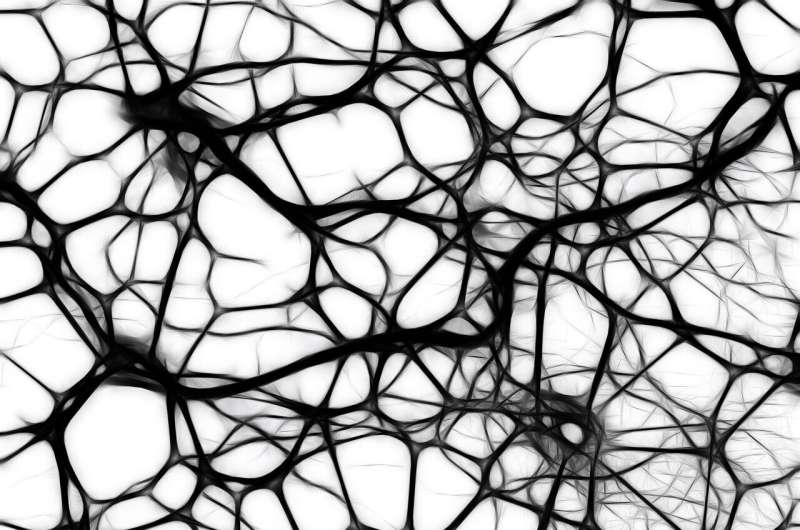This article has been reviewed according to Science X's editorial process and policies. Editors have highlighted the following attributes while ensuring the content's credibility:
fact-checked
peer-reviewed publication
proofread
Researchers discover dynamic DNA structures that regulate the formation of memory

An international collaborative research team, including scientists from UQ's Queensland Brain Institute (QBI), has discovered a novel mechanism underlying memory involving rapid changes in a specific DNA structure.
The team found that G-quadraplex DNA (G4-DNA) accumulates in neurons and dynamically controls the activation and repression of genes underlying long-term memory formation.
In addition, using advanced CRISPR-based gene editing technology, the team revealed the causal mechanism underlying the regulation of G4-DNA in the brain, which involves site-directed deposition of the DNA helicase, DHX36.
The new study, published in the Journal of Neuroscience, provides the first evidence that G4-DNA is present in neurons and functionally involved in the expression of different memory states.
The study, led by Dr. Paul Marshall at the Australian National University and QBI and a team of collaborators from Linköping University, Weizmann Institute of Science, and the University of California Irvine, highlights the role that dynamic DNA structures play in memory consolidation.
DNA flexibility
For decades, many scientists considered the topic of DNA to be solved. DNA is widely recognized as a right-handed double helix, with changes to this structure only occurring during DNA replication and transcription. This structure contains two strands of nucleic acid featuring four bases: adenine (A) and thymine (T), guanine (G) and cytosine (C), which pair together to form rungs of the DNA ladder.
We now know that this is not the complete story. QBI's Professor Tim Bredy explains that DNA can assume a variety of conformational states that are functionally important for cellular processes.
"DNA topology is much more dynamic than the static, right-hand double helix, as presumed by most researchers in the field," said Professor Bredy.
"There are actually more than 20 different DNA structure states identified to date, each potentially serving a different role in the regulation of gene expression."
In the new study, the team has now shown that a significant proportion of these structures are causally involved in the regulation of activity-dependent gene expression and required the formation of memory.
Although epigenetic modifications have a well-established association with neuronal plasticity and memory, to date, little is known about how local changes in DNA structure affect gene expression.
G4-DNA accumulates in cells when guanines fold into a stable four-stranded DNA structure. While there is evidence for the role that this structure plays in regulating transcription, prior to this study, its involvement in experience-dependent gene expression had not been explored.
G4-DNA regulates memory
G4-DNA transiently accumulates in active neurons during learning. The formation of this quadraplex structure takes place over milliseconds or minutes, at the same rate of neuronal transcription in response to an experience.
The G4-DNA structure can therefore be involved in both the enhanced and impairment of transcription in active neurons, based on their activity, to enable different memory states.
This mechanism highlights how DNA dynamically responds to experience and suggest that it has the capacity to store information not just in its code or epigenetically, but structurally too.
Extinguishing fear memories
The extinction of conditioned fear is a behavioral adaptation that is critical for survival. Fear extinction relies on forming new long-term memories with similar environmental elements, to compete with and take over the fear-related memory.
The formation of long-lasting extinction memories depends on coordinated changes in gene expression.
Professor Bredy said it is now evident that activity-induced gene expression underlying extinction is a tightly coordinated process.
"This process is dependent on temporal interactions between the transcriptional machinery and a variety of DNA structures, including G4-DNA, rather than being determined solely by DNA sequence or DNA modification as so often has been presumed.
"This discovery extends our understanding of how DNA functions as a highly dynamic transcriptional control device in learning and memory."
More information: Paul R. Marshall et al, DNA G-Quadruplex Is a Transcriptional Control Device That Regulates Memory, The Journal of Neuroscience (2024). DOI: 10.1523/JNEUROSCI.0093-23.2024




















